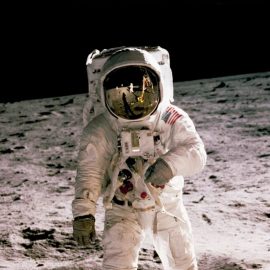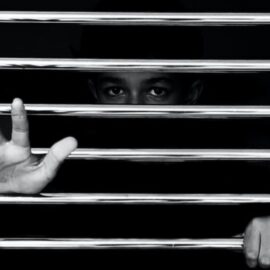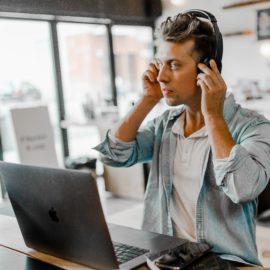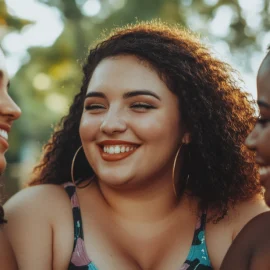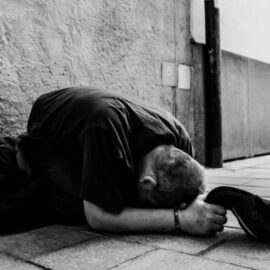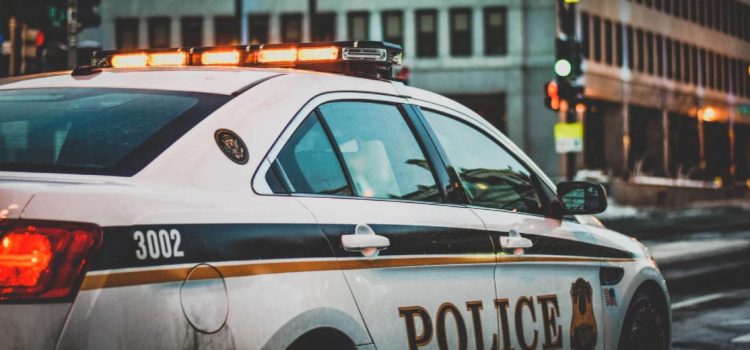

This article is an excerpt from the Shortform book guide to "Biased" by Jennifer L. Eberhardt. Shortform has the world's best summaries and analyses of books you should be reading.
Like this article? Sign up for a free trial here .
What can we learn about police brutality by studying the shooting of Terence Crutcher? Is using case studies a helpful approach to police brutality?
In her book Biased, Dr. Jennifer Eberhardt discusses police brutality by examining the shooting of Terence Crutcher. She breaks down the incident into five parts and examines what went wrong and what should have been done differently. Then we discuss whether using individual case studies is an effective approach to ending police brutality.
Here is Dr. Jennifer Eberhardt’s breakdown of the shooting of Terence Crutcher.
Bias in Cases of Police Brutality
In her book Biased, Eberhardt approaches the complex topic of police brutality in a unique way: by using the 2016 shooting of Terence Crutcher (an unarmed black man who was fatally shot by an Oklahoma police officer) as a case study representing the wider problem of police brutality. She breaks that encounter down into five crucial decision points and examines how racial bias played a role in each of them.
Police Brutality in the United States
The United States has a damning history of violent police interactions; in those situations, racial bias can have life-or-death consequences. (Shortform note: In 2020, police officers killed 1,127 people; 28% of those people were black.)
According to Eberhardt, the ubiquity of camera phones and the increased use of body cameras in police departments means that more and more of these murders are caught on film and shared online, putting a much more personal face to the statistic. In Cleveland, 12-year-old Tamir Rice was playing in a park with a toy gun when he was shot and killed by a rookie officer who thought the preteen posed a “lethal threat.” In Minnesota, an officer shot Philando Castile seven times at point-blank range mere seconds after pulling him over; Castile bled out in his car in front of his girlfriend and her four-year-old daughter.
The high-profile murder of innocent black people at the hands of the police brought the power of implicit bias into the national conversation. Eberhardt describes having tough conversations with mothers of black sons, who’d been coaching their boys on how to avoid police brutality for generations but were suddenly confronted with visceral evidence that young black men can do everything “right” and still not survive an encounter with police.
On top of that, the officers involved in any given instance of police brutality are rarely prosecuted and even more rarely convicted—even when the entire encounter is caught on video. Each acquittal further erodes the black community’s trust in the justice system. (Shortform note: Since 2005, fewer than 2% of officers involved in fatal civilian shootings have been arrested. Of those arrested, 46% of those charged with murder or manslaughter were convicted.)
The Shooting of Terence Crutcher
Let’s look at the role of bias in police brutality through the lens of one incident: the 2016 shooting of Terence Crutcher, an unarmed black man from Oklahoma, by police officer Betty Shelby.
Part 1: Deciding to Pull Over
Officer Betty Shelby was en route to a domestic violence scene when she saw Terence Crutcher’s stalled car and decided to pull over. Why did she abandon an actively violent situation to focus on someone having car trouble? Because racial bias can dictate where people focus their attention. In other words, people are more likely to notice and pay attention to black people when they’re thinking about subjects like crime—because their racial bias creates an unconscious link between black people and crime.
Eberhardt describes how scientists have demonstrated this effect using subliminal priming. In one study, the author and her colleagues found that police officers who were primed to think about crime looked longer at black faces than white faces. The results of this study are telling: If thinking about crime draws your attention to black faces, and a police officer’s job is to think about crime, then bias is inevitable. This might explain why Officer Shelby was drawn to the sight of a black man in a stalled car while she was responding to an active crime scene.
(Shortform note: The link between racial bias and selective attention is well-established in science; however, Terence Crutcher’s death may not be the best example of this principle in action. Crutcher’s SUV wasn’t pulled over to the side of the road—it was stalled in the middle of the street, blocking traffic, which created a dangerous traffic situation. Under those circumstances, it makes sense for an officer’s attention to be diverted to the scene.)
Part 2: Overestimating Crutcher’s Size
Subconscious racial biases don’t just influence our beliefs—they also impact our ability to accurately see what’s right in front of us. For instance, several studies show that both black and white people estimate black men to be much larger than they really are. In one study, participants looked at photos of black and white men’s faces and guessed their height, weight, and strength: They consistently rated black men as taller, heavier, and stronger than white men, even without seeing their full bodies.
The tendency to overestimate black men’s size and strength twisted officers’ perception of Terence Crutcher and made him seem like more of a threat. Terence Crutcher was five feet nine inches tall and weighed 255 pounds, but the officers on the scene that night guessed his weight to be 300 pounds. Given that most police officers are well-practiced in estimating suspects’ body size, 45 pounds is a big discrepancy.
| Size Overestimation, Police Violence, and the Black-Ape Association Overestimating black men’s size and strength is an established trend in fatal police-civilian interactions. For example, in 2014, Milwaukee police officer Christopher Manney fatally shot Dontre Hamilton after Hamilton grabbed the officer’s baton: Manney later said that Hamilton had “superhuman strength” and could easily overpower any police officer. Hamilton’s autopsy revealed that he was only 5 feet 7 inches tall and weighed 169 pounds. Similarly, in 2019, police officers in Aurora, Colorado held 23-year-old Elijah McClain in a now-banned chokehold, causing him to vomit and struggle to breathe—the officers labeled this as “excited delirium” and called for paramedics to administer ketamine, a powerful sedative. Although McClain weighed just 140 pounds, a first responder seriously overestimated his weight and administered enough ketamine for a 190-pound person; McClain went into cardiac arrest and died several days later. Overestimating black men’s size and strength is related to the black-ape association discussed in Chapter 6. In a 2008 study, Eberhardt and her team found that newspaper articles about death-penalty-eligible criminal cases are more likely to contain ape-related words when the defendant is black. The researchers combed these articles for mentions of 54 ape-related words, many of which—like “brute,” “beast,” and “predator”—are related to size and strength. In a later study, other researchers found that police officers who implicitly associate black people with apes are more likely to see black children as older than they really are and to use violence against black children in police custody. |
Part 3: Seeing Surrender as a Threat
People see black men’s bodies as larger and stronger than they really are—and when those bodies move, the effect is amplified. In this case, Officer Shelby shot Terence Crutcher while he was walking away from her with his hands in the air, indicating surrender. But Shelby later testified that she fired the gun because she genuinely feared for her life. Why? Because racial bias primes people to see black people’s movements as more threatening by default.
A pioneering study in 1976 found that when college students saw a white stranger shove a black stranger during a staged argument, 17% classified the white person as “violent”; but when they saw a black person shove a white person, a full 75% called the behavior “violent.” It’s clear that racial bias has a strong impact on how people interpret the movements of others—and it’s likely that Officer Shelby interpreted Terence’s movements as more suspicious than she would if he had been white. (Shortform note: Some reviewers of Biased criticized Eberhardt for not mentioning that Crutcher’s autopsy revealed he was high on PCP at the time of the shooting, which may have contributed to his erratic movements. According to her lawyer, Officer Shelby had completed drug recognition training and was aware that Crutcher was likely under the influence of the drug.)
Part 4: Assuming He Had a Gun
Officer Shelby felt threatened in part because she incorrectly assumed Crutcher had a gun in his car. Racial bias was at play here too. The author and her colleagues studied that assumption with another subliminal priming experiment, this time by subconsciously exposing participants to either white male faces, black male faces, or no faces. Next, they measured how quickly participants identified an object from a series of grainy images that slowly cleared up over 41 frames. Some of the images showed common household items; others showed objects that obviously related to crime, like a gun.
All participants identified household items equally quickly, regardless of priming. However, participants who were primed with black faces identified crime-related objects much quicker than participants in the other groups because of the underlying, biased association between black people and crime. Racial bias changes the way we see objects, not just people. (Shortform note: A 2006 study found similar results: After seeing a black face, participants were more likely to mistake a household object for a gun than if they’d seen a white face.)
Part 5: Pulling the Trigger
The most crucial impact of racial bias is on behavior, especially for law enforcement officers, whose actions can have deadly consequences. Racial bias makes officers more prone to use violence against a black suspect (like Terence Crutcher) than a white one.
To test whether racial bias impacts the decision to shoot at a suspect, researchers gave participants a simulated shooting task in which suspects were either black or white and held either a gun or a household object.
The first rounds of this study tested college students and non-police community members. These participants hit “shoot” faster when the person holding a gun was black than when the person was white, and they were also more likely to mistakenly shoot an unarmed black person than an unarmed white person. Police officers showed similar results: Just like the general population, officers hit “shoot” faster for black people with guns than white people with guns. However, the officers’ results differed from the general results in two important ways:
1) Officers from big cities (with large populations of black people) had more racial bias in their reaction time than officers from places with smaller black populations. In other words, they were quicker than other officers to shoot at black people with guns and slower to shoot at white people with guns.
2) There was no racial bias in false positives (“shooting” someone who isn’t holding a gun) for the police officers. Eberhardt believes that this is most likely because officers undergo extensive use-of-force training, in which they practice quickly distinguishing between a gun and a harmless object. The more hours of training officers had, the less likely they were to mistakenly shoot anyone, regardless of race. The goal of officers’ training isn’t to reduce racial bias—it’s to reduce the likelihood of an officer shooting an unarmed person. However, giving officers the opportunity to regularly practice that skill made them better at their jobs, which reduced racial bias by default.
(Shortform note: Eberhardt doesn’t touch on the fact that Officer Shelby’s partner shot Crutcher with his Taser just seconds before Shelby fired the fatal shot. This begs the question: Why was Shelby’s first instinct to grab her gun rather than her Taser? Implicit bias may have led her to choose the deadlier weapon, but police training also plays a role: Experts say most officers get extensive firearms training but only “a few hours” of Taser training. Officers are taught to think of their firearm as their “best friend.”)
| Is the Case Study Approach Helpful? This section is a detailed look at a single incident of police brutality, but not every fatal police encounter is the same, and it’s not clear whether bias impacts those other encounters in the same ways. For example, officer Tim Loehmann fatally shot Tamir Rice within two seconds of arriving on the scene. Some of the same factors were at play in that encounter as in the death of Terence Crutcher—for instance, the officers saw Tamir as larger than he really was (Loehmann’s partner described Tamir as “maybe 20” years old while radioing for an ambulance). However, the studies in this section don’t shed light on whether or how racial bias played a role in the unique aspects of this incident, such as why the officers failed to administer first aid after the shooting or why they tackled and handcuffed Tamir’s 14-year-old sister when she arrived on the scene. Ultimately, using a case study such as the shooting of Terence Crutcher to structure the discussion of bias in police brutality helps organize the information rather than just presenting a list of scientific studies. However, this approach invites questions about how these studies apply to police violence more generally, or whether other factors (such as dispatch priming, which can influence officers’ decision to pull the trigger before even arriving on the scene) may have been more relevant in other incidents of police shootings. |

———End of Preview———
Like what you just read? Read the rest of the world's best book summary and analysis of Jennifer L. Eberhardt's "Biased" at Shortform .
Here's what you'll find in our full Biased summary :
- How implicit bias forms in the brain
- Whether or not bias training actually works
- Why there has been a sudden resurgence in white nationalism


